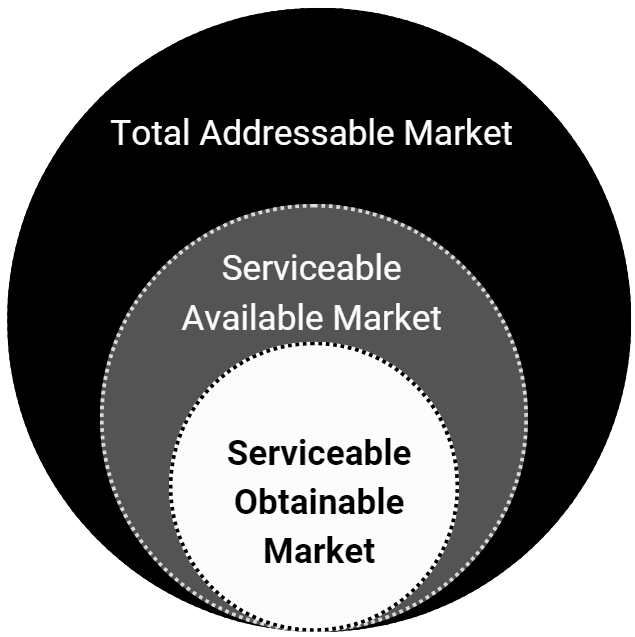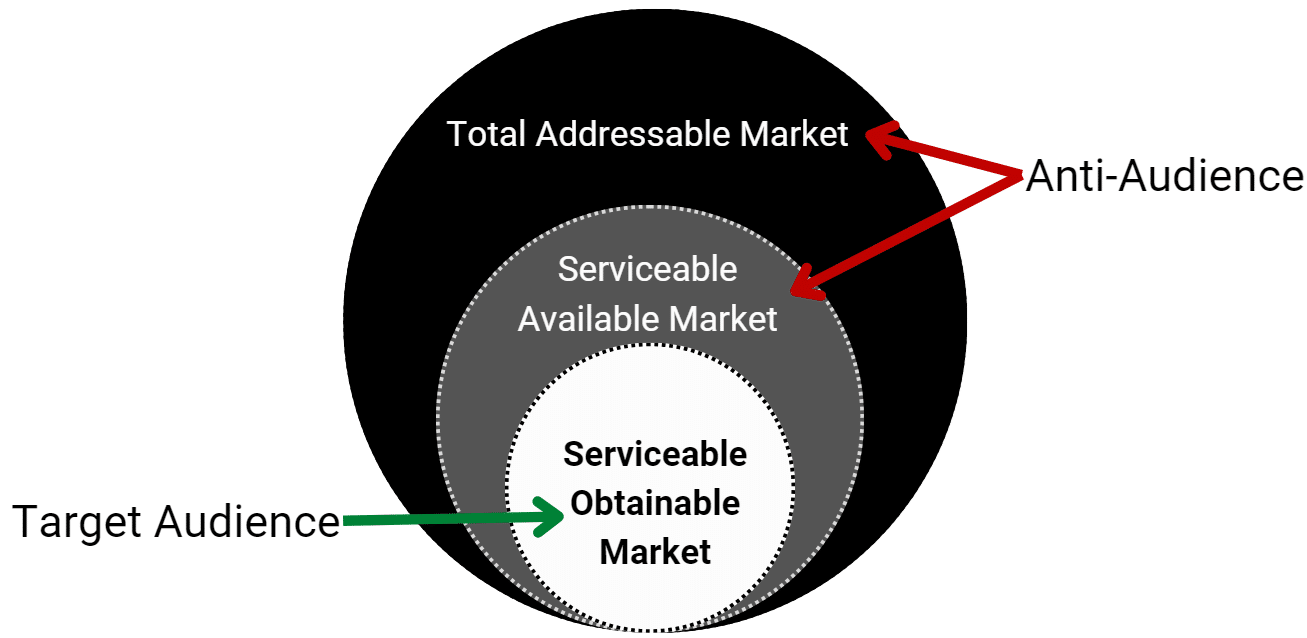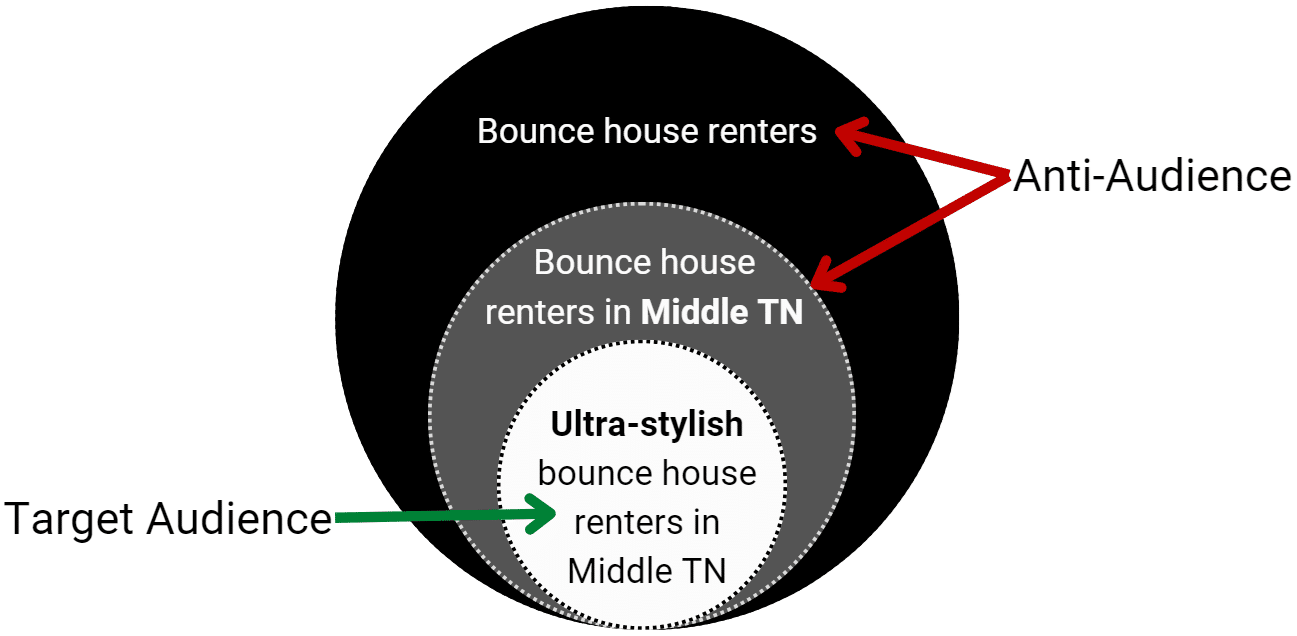
If you’ve ever tried using avatars or buyer personas to write a Google Ads headline, you know it can be frustrating and fruitless.
You try to define your target market, only to be told, “Our audience is anyone who wants our product – we don’t exclude anyone.” Persist a bit and you might refine it to “Ages 25-45 in metropolitan areas.”
Eventually, you craft a detailed persona: Alex, 37, from Chicago, who enjoys protein smoothies, drives a Lexus and dreams of traveling to Asia.
The problem is that going ultra-deep in a psychographic profile doesn’t actually help you craft a 30-character headline for fleet management software.
This article tackles the steps to successfully transform your PPC ads just by focusing on the people who click them.
Your ad shouldn’t be for everyone
Targeting a specific client avatar, like “Alex from Chicago,” doesn’t translate to an effective headline. Aiming your ad at everyone interested in fleet management software isn’t the solution either.
What you really need is an ad that smartly qualifies each click.
You want your ad to attract and convert your ideal clients while encouraging everyone else to pass by your ad.
Not only does this approach prevent unnecessary clicks – saving you money – it also boosts your conversion rates by focusing on those most likely to convert.
Here’s how to create headlines that attract the right audience and repel the rest:
- Identify who should and shouldn’t click your ad using target and anti-audiences.
- Tailor your ads for these specific groups, directly addressing your ideal clients’ needs and desires while subtly deterring others.
- Measure your success using the right metrics to know if your ads are effective.
Ready to refine your approach? Let’s dive in.
Step 1: Decide who’s in and who’s out
In this first step, we’ll go through several exercises to help you identify and distinguish between your audience segments.
It might feel new at first – most marketers were never taught this – but it’s a skill that will help you throughout your career.
Know your TAM, SAM and SOM
When you target “everyone” interested in fleet management software, you’re addressing your total addressable market (TAM) – this includes all potential buyers in the category.
Here’s a simple diagram to illustrate TAM, SAM and SOM:

We’re not using this framework to estimate market sizes but to clarify who we are and aren’t targeting.
Your TAM is much larger than the segment of the market that will actually choose your company, and it’s certainly larger than you’d want to target in terms of pay-per-click costs. The same applies to your serviceable available market (SAM), the segment of the TAM you can actually serve.
Your serviceable obtainable market (SOM) includes prospects who are most likely to convert and who you should be targeting.
Identify your target audience and anti-audience
- Target audience (SOM): People actively seeking the specific benefits, price points and features your product offers. You want this audience to engage with your ads.
- Anti-audience (TAM and SAM): Everyone who’s left becomes your anti-audience. They are searching within your keyword category but aren’t looking for what you’re specifically offering. Your anti-audience will click your ad but won’t convert.

To define your anti-audience, think about who’s least likely to say “yes” to your offer:
- Who doesn’t resonate with your unique selling points?
- Who clicks your ads but doesn’t become a lead or make a purchase?
- Who fills out a form but never follows through to become a client or customer?
Most businesses running ads already know who the “problem clicks” are from.
A high-end art print company attracts visitors looking for cheap movie posters, the last-mile delivery service receives more job applications than customer leads and so on.
If you’re stuck, an AI tool like ChatGPT can help identify who’s in your category but not an ideal prospect for you, given the specifics of your offer.
Compile your target and anti-audience lists
Once you understand who to target and who to dissuade from clicking your ads, it’s time to create detailed audience lists.
These two lists will essentially be mirror opposites.
Your target audience list includes attributes of your ideal customers, while your anti-audience list includes attributes of people who won’t convert.
Include qualities that relate to your offer, such as:
- Location
- Scope of service
- Compatibility
- Requirements
- Style
Consider a Japan-based real estate investment company using Google Ads to attract investors. They realize many of their leads come from people looking to buy their first home, not from potential investors.
To combat this, they craft their audience lists to differentiate between those they want to attract and those they’d rather avoid:
| Target audience | Anti-audience |
| Real estate investors | Looking for low-cost housing |
| Interest in properties in Japan | Looking for properties outside of Japan |
| Wants real property | Wants REITs |
If your lists feel obvious and even redundant, you’re doing it right! Once your audience distinctions feel self-evident, writing effective headlines and ads becomes much easier.
Step 2: Tailor your ads to attract and repel
How do you write a headline that discourages the wrong clicks?
Don’t worry, I’m not suggesting you write a headline that says:
“If you don’t have the budget for our services, don’t click this ad.”
Fortunately, there are ways to make your ad specific without being off-putting.
Example 1: America’s ‘non-woke’ job board
This ad shows for the keyword “career opportunities,” targeting job seekers disillusioned with “woke culture.”

The headline is straightforward: “America’s Non Woke Job Board.” It appeals directly to its target audience while naturally deterring those not aligned with this perspective.
- Target audience: People upset about “woke culture.”
- Anti-audience: People who aren’t looking for “non-woke companies.”
What if, instead, they had used the headline:
“Find a good job that respects your values.”
Interestingly, that’s the headline on their homepage.
It might work well there, where visitors know the context and ethos of the company. However, for a Google Ad, including “wokeness” is a better filter to pique the interest of the right job seekers while keeping click costs down.
Example 2: Only for accredited investors
In finance, advertising to the right audience isn’t just a matter of efficiency – it’s often a legal requirement.

- Target audience: Accredited investors.
- Anti-audience: Anyone who’s not an accredited investor.
A headline clearly stating “Only For Accredited Investors” immediately clarifies who the ad is for, discouraging ineligible investors from engaging with content they legally cannot access.
Example 3: Binge-watch your way to fluency
For a language learning service, standing out in a crowded market requires a unique approach.

- Target audience: People looking for an edu-tainment learning style.
- Anti-audience: People in a rush or who want an academic experience.
Lingopie’s ad, “Bingewatch your way to Fluency,” perfectly promotes its offering. It attracts learners who prefer a more entertainment-based method, while those in a rush or seeking a rigorous academic structure look elsewhere.
Take your ad through two passes to make sure your headlines are:
- Uniquely appeal to your target audience.
- Discourage clicks from your anti-audience.
Step 3: Know your metrics
Are you trapped in the “one job” fallacy of advertising? It’s a common misconception:
“An ad’s only job is to get clicked. It’s the landing page’s job to convert.”
Many marketers and their clients subscribe to this view.
The problem is clicks and click-through rates (CTR) are poor metrics for determining an ad’s effectiveness.
If an ad pulls in the wrong audience, it may generate more clicks, but this could lead to increased costs while sales decline.
This isn’t just theoretical; data from WordStream shows this is exactly what happened to the average Google Ads account last year:

According to these year-over-year stats:
- Average CTR: Increased (+3%)
- Conversion rate: Decreased (-10%)
- Lead costs: Increased (+20%)
A higher CTR doesn’t correlate with business growth.
Conversely, attracting fewer but more targeted clicks can significantly enhance performance.
Here are the results from a client after we refined their ads to better target their audience:

- Average CTR: Decreased (-3%)
- Conversion rate: Increased (+71%)
- Lead costs: Decreased (-47%)
Despite fewer impressions and clicks, actual leads went up 42%.
Does this mean you should aim for a lower CTR?
Nope! It just means that if your goal is to increase leads and sales, you should measure your ad against its ability to drive leads and sales, not its ability to drive more clicks.
Instead of only tracking click activity, prioritize post-click metrics:
- Conversions and conversion rates: Measure how effectively your clicks are driving leads and sales.
- Cost per lead (CPL) and return on ad spend (ROAS): Evaluate your ads’ cost efficiency.
These indicators give you a clearer picture of your ad’s true impact, so you know if your ads are reaching and resonating with your intended audience.
Walkthrough: Optimize Google Ads with anti-audiences
Now that you’re familiar with the concept of anti-audiences, let’s put it into practice by optimizing an ad from start to finish. This exercise is adapted from Magnetic RSAs, my course on crafting effective responsive search ads.
We’ll analyze an ad from Inflate Clarksville, a local business (not a client) specializing in stylish bounce houses and inflatable party decor rentals in Middle Tennessee.
Here’s a screenshot of one of their ads:

Define the audiences
If the total addressable market (TAM) is all bounce house renters, the serviceable available market (SAM) could be defined as bounce house renters in Middle Tennessee, which is who the ad’s headline is targeting.
However, this ad should target a more niche market.
Inflate Clarksville’s offerings are distinct, with an upscale aesthetic suited for stylish events, setting them apart from typical neon-colored children’s inflatables.

The ad must emphasize these upscale options while deterring those seeking traditional styles.
Here’s a simple TAM/SAM/SOM diagram for visual aid:

Using this model, we define the target and anti-audiences by aesthetic preference and location.
Here are the specific traits and attributes that could appear in the audience lists:
| Target audience | Anti-audience |
| Heavily engaged with social media, potentially influencers | Bargain hunters looking for discounts |
| Locals in the middle Tennessee area | Out-of-area prospects |
| Seeks elevated aesthetic for parties for children or adults | Prefers traditional, neon-themed children’s party styles |
With clear target and anti-audience lists, we can fine-tune the ad.
Optimize the headlines and message
Optimizing an ad involves enhancing what works and minimizing ineffective elements.
The current ad effectively notes the service (bounce house rentals) and location. It misses the unique value proposition (UVP) of the upscale bounce houses. It also highlights water slide rentals, which don’t specifically appeal to the ideal customer base.
A revised ad should spotlight Inflate Clarksville’s high-end inflatables, appealing to local, style-conscious consumers and subtly deterring those looking for conventional or economical options.

Google Ads headlines: Before and after roundup
Before: “Bounce House Rentals TN – Inflatable Water Slides”
- Fails to differentiate
- Does not target the specific audience
- Gives no reason for the anti-audience to avoid clicking
After: “Aesthetic Bounce House Rentals – Stylish Middle TN Inflatables”
- Incorporates “aesthetic” and “stylish” to set clear expectations
- Attracts customers looking for upscale bounce houses
- Deters those seeking basic or discount options
This focused rewrite helps to attract the ideal customer, reduce irrelevant clicks and improve the ad’s efficiency.
Time for action
To further refine your skills in crafting Google ad headlines:
- Review existing ads: Assess whether your current ads clearly identify and communicate with the target and anti-audiences. Edit or create new versions to sharpen their focus.
- Craft new ads: When starting new campaigns, define your target and anti-audiences upfront to guide your ad creation process.
- Practice material: If you lack a product or service to advertise, use existing Google ads as practice material. Analyze, critique and rewrite ads to better specify their target audiences.
Happy writing!
from Search Engine Land https://ift.tt/H4grdRI
via IFTTT
No comments:
Post a Comment